https://www.droid-life.com/2022/09/09/galaxy-z-flip-4-review-the-foldable-to-buy/
I’m just going to come right out and say it – the Galaxy Z Flip 4 has mostly won me over. This is a foldable experience, at this stage of my life, that I could absolutely get behind.
I’ve had a Galaxy Z Flip 4 in pocket for almost a full month now. Samsung sent us one for review shortly after they announced it, plus I pre-ordered my own and have used one of the two since I unboxed the Bora Purple version on August 11. For review purposes, this is a long time to be with a phone, much longer than we often spend with phones.
At this point, I really do know all that I need to know about this phone in order to tell you what I think. You might already know enough too, so let’s just jump into it – this is our Galaxy Z Flip 4 review.
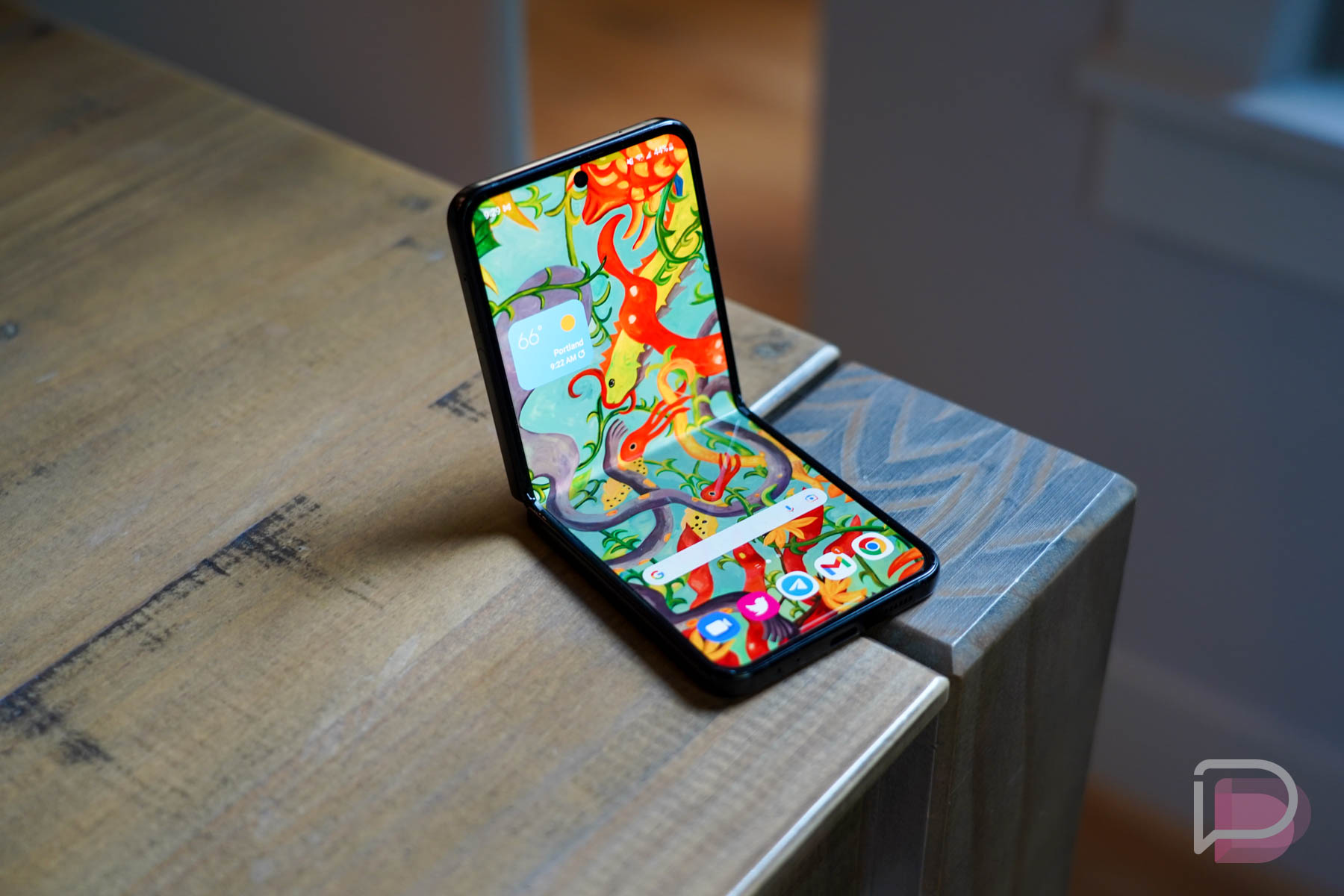
What do I like about the Galaxy Z Flip 4?
Backing up for a minute before we dive in, here’s a recap of the Flip 4. This is Samsung’s new $1,000 foldable flip phone with a Snapdragon 8+ Gen 1, 8GB RAM, up to 512GB storage, two displays (one that’s 120Hz), a 3700mAh battery, dual rear cameras, and a freaking hinge that folds the phone in half. It comes in graphite, purple, gold, or blue, plus you can make a custom color combination through Samsung’s Bespoke program.
OK, now onto what I like.
Size, design, and durability. Flip phones are not a category of phone that I’ve had much praise for. If you go back to my review of the Moto Razr when it returned, you’ll know that I was not kind. I also skipped the first couple generations of Samsung’s Flip series, then gave the Flip 3 a serious try last year before returning it. For reasons I still cannot quite explain, the Flip 4 has got me.
In the opening of this review, I mentioned that the phone makes sense for “this stage of my life.” I think what I mean by that is that I’m loving the ultra-portability of a folding phone that’s this small. I can toss it in any pocket, it’s light enough to handle when I need to, and the clamshell styling also has me less worried about how I handle it. I’ve chucked this phone around the house or car and I’m just not worried about it. I don’t even know if I’m more active now than I was a year ago, but folding a phone into a little square and then moving about has been refreshing in 2022.
With this Flip 4, Samsung has really refined the overall design. We have flattened edges that are properly grippy. The new hinge is stiff without being difficult, so opening and closing the phone is not at all the nuisance of some other foldables. The width of the phone, when open, is also perfect for my hand. You can easily get your paws around it and hold it for lengthy sessions without tiring. It may be tall as hell, but it’s not a phone that you’ll struggle to hold.
For the past month, the Flip 4 that I made in white with a black frame has held up well. I’ve used it a ton. It’s been tossed onto plenty of outdoor brewery tables. My kid has used it for mobile gaming. And the screen is still flawless, as is the outer body. I’ve even set it in a bunch of weird places, because I use Flex Mode for Google Duo calls with my wife, and yeah, it looks great.
I know that this phone isn’t that much different than last year’s model, but everything about it has felt right this time. The phone is also quite the looker, at least in this white-black combo that I made.
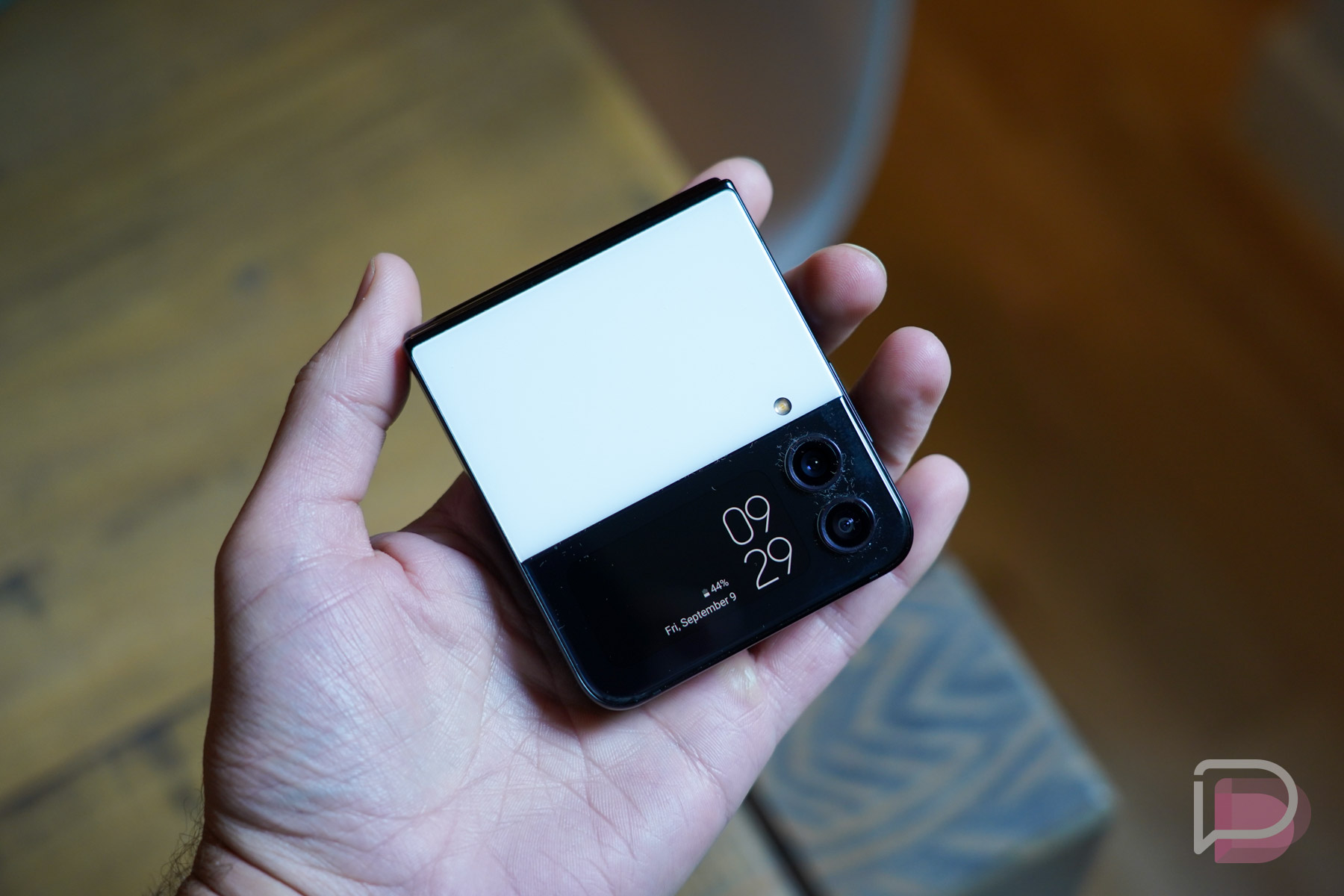
Performance and battery life. This new Snapdragon 8+ Gen 1 chip is doing a lot right. The phones I tested earlier in the year that used the 8 Gen 1 might have run smoothly, but none were as efficient as this chip and the Galaxy Z Flip 4 really shows that.
As far as general performance goes, yep, the phone is buttery smooth and feels fast. Not only do you have plenty of RAM (8GB) and fast storage, you have a 120Hz display that looks great no matter the content on screen. But when you do throw on a game or watch a video or utilize multiwindow, the phone doesn’t heat up and it stays humming. This chip seems to run so much differently than the earlier 8 Gen 1 that I’m not sure they really compare.
Now, when it comes to efficiency, you have to remember that this phone only has a 3700mAh battery. Sure, that’s bigger than last year’s, but it is also small when compared to almost any other flagship-level phone. Most phones have batteries over 4000mAh. The only phone that doesn’t is the regular Galaxy S22, which also happens to have a 3700mAh cell. The battery life on that phone is awful – so bad I couldn’t bring myself to use it for long and used it as my trade-in for this Flip 4 after only a few weeks of use.
The Bora Purple Flip 4 that I tested initially was easily getting 4 hours of screen-on time in a day with 20% battery remaining. Again, for a battery this small, and knowing what I was getting for the Galaxy S22 with the same size battery, this is pretty incredible battery stuff. When I switched over to this white-black model, I haven’t had the same battery life, but I’m also had a Galaxy Watch 5 Pro attached and I actually think it’s draining battery. I say that because the phone warned me today that the Wear OS app (which it shouldn’t need to use) was causing battery drain. Also, I didn’t attach a smartwatch to the purple model.
If there is one complaint, it is once again in the charging speed department. Samsung is not like the rest of the big Android industry players when it comes to pushing charging tech. This Flip 4 can charge at 25W wired speeds, but that’s not really that fast. The claim is that it can charge from 0% to 50% in 30 minutes. However, that’s actually pretty bad. 30 minutes is a long time to only get to 50% when you consider the OnePlus 8T can go from 1% to 100% in 20 minutes. Samsung really needs to step up their charging game.
So overall, I think this phone runs like few phones I’ve tested from Samsung with this 8+ Gen 1 chip and also gets surprisingly good battery life that should get most people through a full day.
Displays. I’ve been opening a closing Samsung’s foldable phones for 4 years now, probably open and close this phone 100 times a day, and yet I still find myself amazed at the fact that I can do that to a display over and over again. Foldables are wild, man. Technology really can be fun in 2022, even if it’s something we should have grown used to after a few years.
Anyways, the displays on this phone are good! The inside foldable display is the star, measuring in at 6.7 inches with a 1080p resolution and 120Hz refresh rate. Because it’s a fancy foldable piece of glass, you might worry that it’s not up to the same color standards as a phone like the Galaxy S22, but I’d argue that it is. Colors here are excellent, without that old school punchiness in older AMOLED screens. In the “Vivid” setting, I get a great balance of natural colors and a pop of color here and there. Out of the box, this phone’s main display is so pleasing to the eye.
Of course, since this is Samsung, you get lots of options to customize the screen experience. There is a dark mode, adaptive brightness (on the main screen), a blue light filter, and advanced color profile settings. In general use, the screen is very responsive to the touch with decent viewing angles, gets plenty bright in outdoor situations, as well as dim enough in bed at night. I really have no complaints about the display. There aren’t any huge tradeoffs here compared to a normal smartphone display, other than you should probably take a bit of extra care with it.
If there is something you’ll need to get used to, it’s the feel of the display. Obviously, there is a bit of a dip or crease in the middle where it folds and you will indeed notice that as you swipe across the screen. I’m used to it at this point, but even my mom pointed it out as being a thing when she stopped by a couple of weeks ago. I can also tell you that my wife bought a Flip 4 and finally ditched her Note 20 Ultra, and she hasn’t complained about the dip yet.
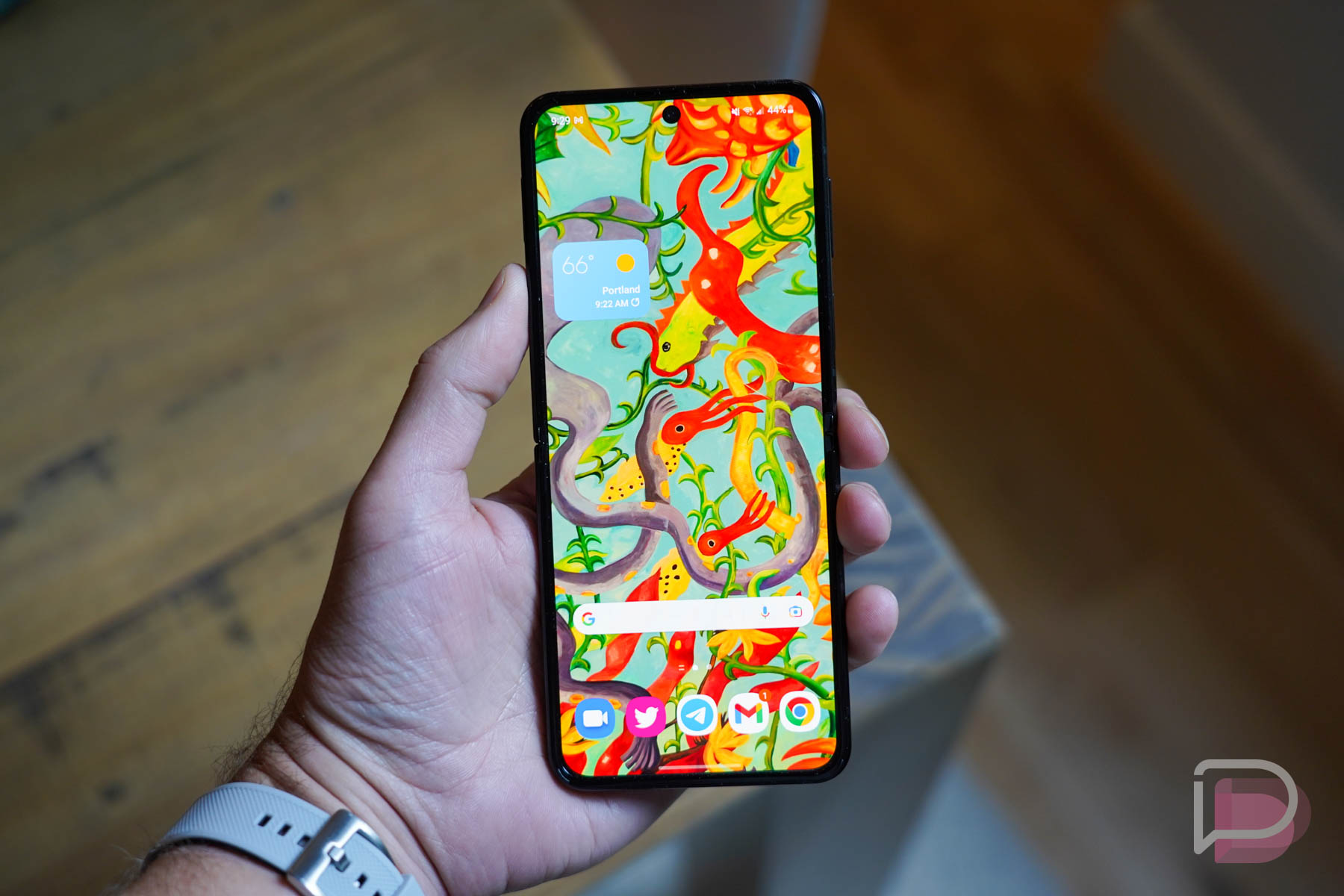
But the other thing is that the screen has a softness to it that you might not be ready for. Unlike the glass on your normal phone that feels as hard as any piece of glass, the Flip 4’s screen really does feel softer. It’s quite pleasing to use, although I could see the flipside of that idea and someone missing rigidity you might be used to on other phones. It’s also kind of a fingerprint magnet and needs to be wiped regularly.
As for the cover screen, it has limited uses, but mostly does what it needs to. It’ll show you the time and gives you limited interaction options with notifications. You can use widgets on it to control music, see the weather, run timers or setup alarms, that sort of thing. You can customize. it with different colors and backgrounds and really make it your own, which is fun. I can tell you that I really haven’t found much use for it other than being a clock, a battery meter, and taking quick glances at notifications before then opening the phone to deal with them. In a way, I treat the cover display like a smartwatch.
You may think that this cover display needs to do more, like give you a keyboard to type or let you run full apps, but I’m not sure that would make for a good experience. It’s small enough to show you information that then lets you decide if it’s time to open your phone and deal with something or not. I’m really not sure you want it to do anything else – I sure don’t.
I do have a complaint about using it as a viewfinder. One of the cool features of the display is to use it in conjunction with the rear cameras to take higher-quality selfies. Unfortunately, the viewfinder doesn’t show you the full picture, so framing can be somewhat difficult and the final shot often includes a lot of extra space you might not have wanted. I’m sure someone could get used to it or crop heavily.
For a double-screened experience, in a package this small, Samsung has dialed in what they want to accomplish. I think for the most part this all works together, especially if you treat the cover display like I do, as I would a smartwatch that’s good for notifications, telling the time, a timer or two, and not much else. In addition to that, you get an excellent internal display that also happens to fold in half.
Software. One of the biggest reasons we do our “First 10 Things” series is because Samsung’s One UI skin has become as bloated as ever and most of the stuff they include needs to be turned off or buried away. Once you do that, this is a decent software skin and we all know that Samsung is king of updates. Buying a phone like the Flip 4 means a yearly cycle of skin updates with new features as well as one of the longest support periods in the world of Android.
Out of the box at launch, this phone is running One UI 4.1.1 and Android 12. It’ll see an update to Android 13 quite soon I’d imagine, as Samsung typically updates its recently launched phones in a hurry. They’ll also push monthly security patches for a number of years, with official support ending after a full 5 years of updates that includes 4 OS upgrades.
I’m hesitant to re-tell the story of the rest of the software here because I’ve written about One UI and its features more times than I care to. Like, if you want to know what’s great and not about One UI, feel free to dive into my Galaxy S22 Ultra review (or watch our First 10 Things video below). This phone basically does everything that phone does, outside of the S Pen stuff. It has tons of display settings, ways to customize sound and vibrations like few other phones offer, wallpapers and themes, plenty of security choices (both fingerprints and face unlock), battery and device management, and some advanced settings. It’s One UI and it’s mostly good once you figure out what you need and don’t need.
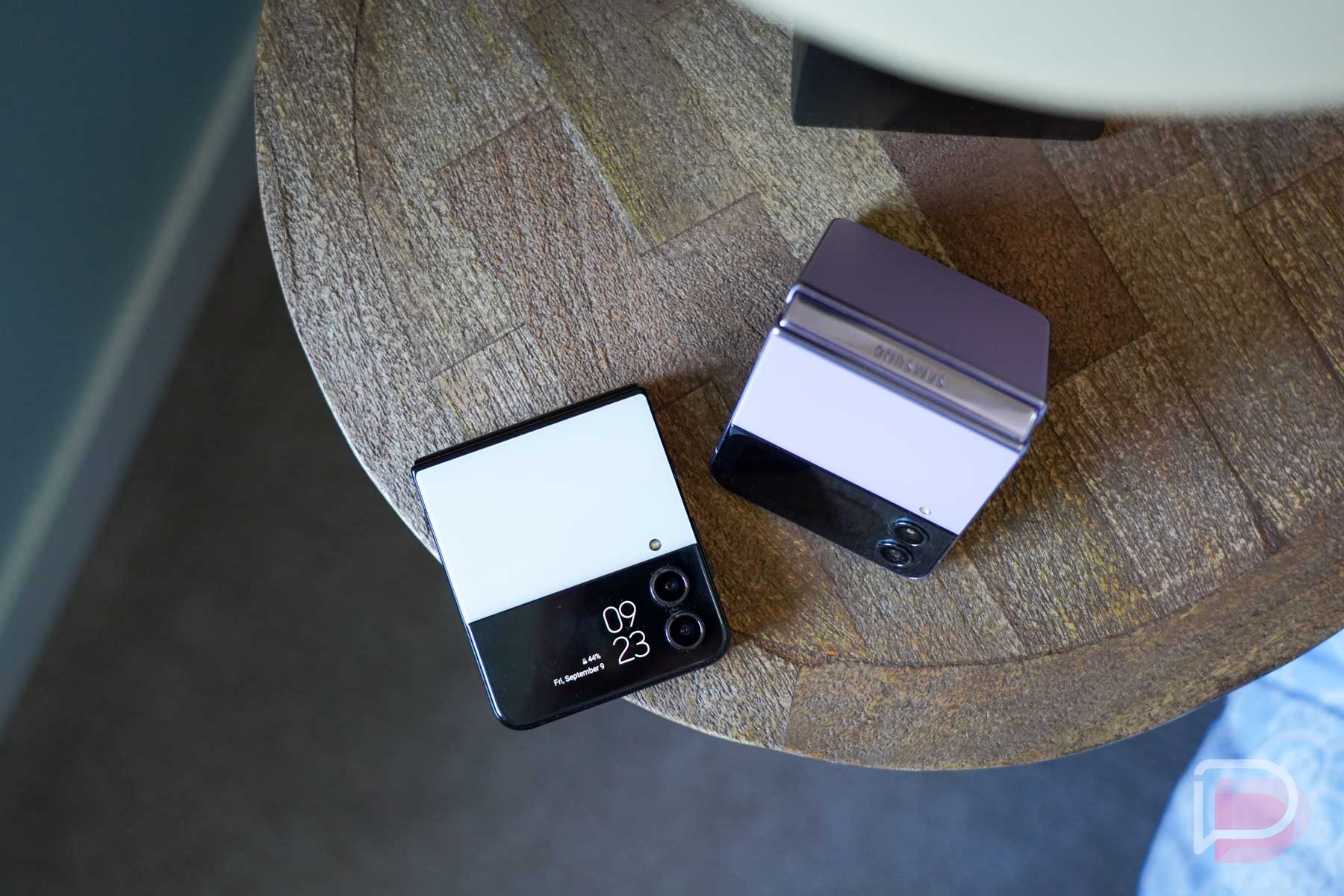
What I’d like to highlight is the stuff Samsung included that makes the Flip 4 special, and well, it’s not much. The only real feature you’ll find that utilizes the folding display is something called Flex Mode. It’s actually quite useful because it lets you fold the phone to a 90-degree angle, set it on a surface, and then run apps that show up in the top portion of the phone. Using the camera viewfinder in this way, calling over video, or even running an app like Twitter or Chrome is kind of nice. Even Instagram, if you were lying in bed and set the phone in Flex Mode on your chest in the ultra-laziest fashion, can be used this way. So yeah, Flex Mode is neat.
Other than that, it’s just Samsung’s One UI and that comes with tons of software support. You gotta love that.
Fingerprint reader. It feels weird pointing out a fingerprint reader, but because Samsung used a side-mounted fingerprint reader that isn’t in the display, I have to confirm how good it is. In-display fingerprint readers are almost all bad and I wish companies would stop using them. My opinion on that idea becomes clearer every time I use a classic fingerprint reader like Samsung used on the Flip 4. This thing reads your finger every single time, but it also does so in an instant. Rarely has it told me I scanned improperly or asked me to do it again. I have zero complaints about this reader and really just want the world to know that this is the way.
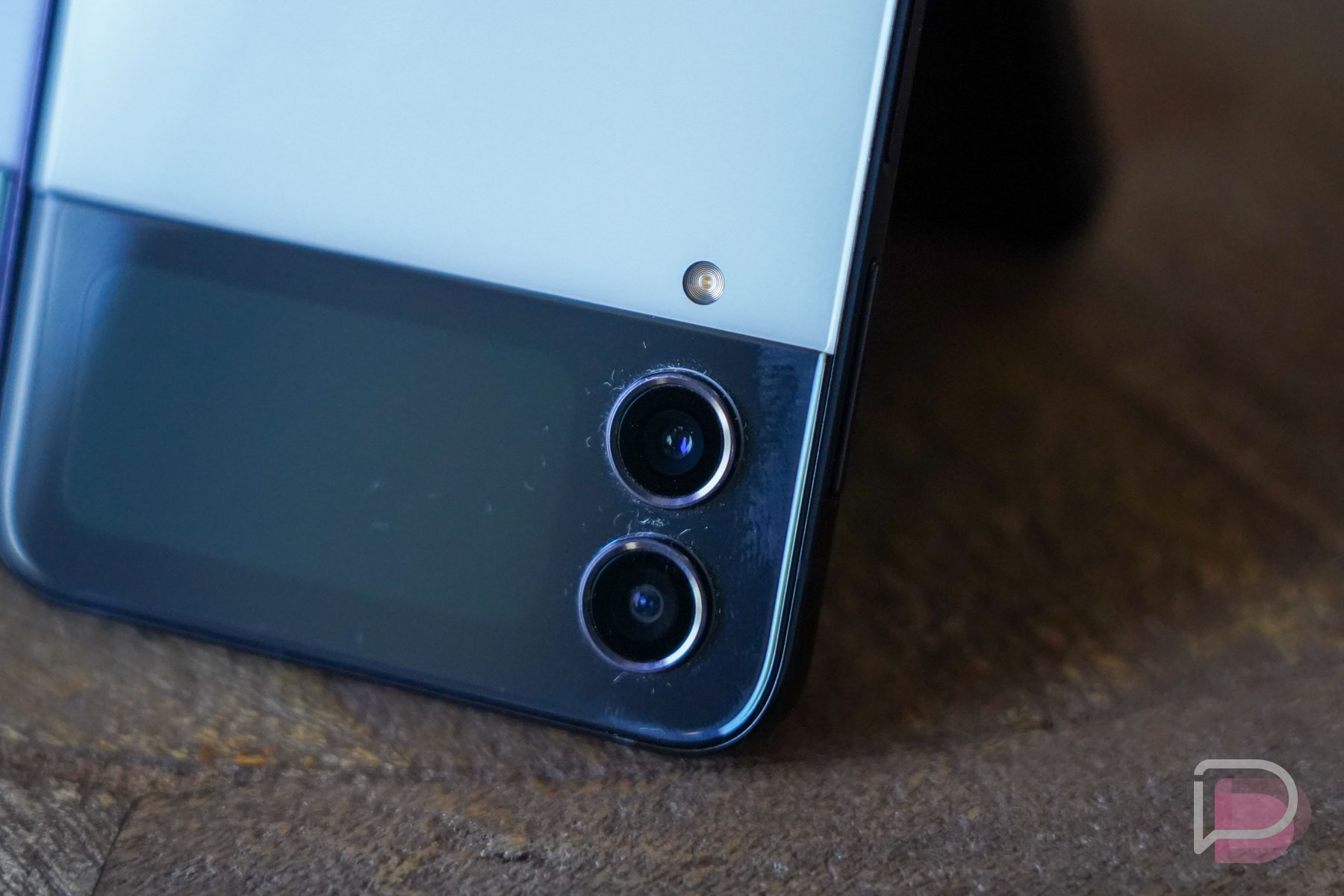
What’s bugging me about it?
Camera. If there is one area that would make me hesitate from using the Flip 4 going forward, it would be in the camera. Samsung kept the same dual 12MP wide-ultrawide setup from the Flip 3 and probably hoped that the new chip inside would improve things and it probably did on some level. Did it do enough? Eh, I guess that depends on your needs.
I took a ton of outdoor shots that all came out pretty good if not excellent at times. The weather has been stellar in Oregon over the summer and so all of my summertime pictures from family adventures are solid. But like any non-top-tier camera, it’s when indoors or with poor lighting that you hoped for more. I can’t tell you how many pictures I tried to take of my kitten walking around my house and each one is blurry. I even stopped taking indoor food shots because I wanted to keep my appetite. I also had a ton of issues with lens flares with the sun around that I didn’t notice until after the photo was snapped and my picture had a giant half ring through it. You’ll see a couple of examples below.
Did I stop taking photos with the Flip 4 because of major frustrations? No. I still used it a lot. It was often the only camera I had on me and many of the photos I took were totally great. In fact, I’d still say that this camera is quite good most of the time. My issue is that this is a $1,000 phone with a camera you’d probably find in a $500-$600 phone. I compared it at times to the Pixel 6 and found similar shots. I know that the story with Samsung’s expensive foldable phones from the beginning has been that they need top tier cameras, but I just want to be clear that it’s still the case with the Flip 4.
This camera is fine most of the time – it’s just not all of the time.
As far as camera software goes, you have portrait modes, video at up to 4K/60fps, a night mode, pro camera and video modes, and plenty of other settings, including QR scanning. It’s a well-stocked camera app, just like every other Samsung phone.



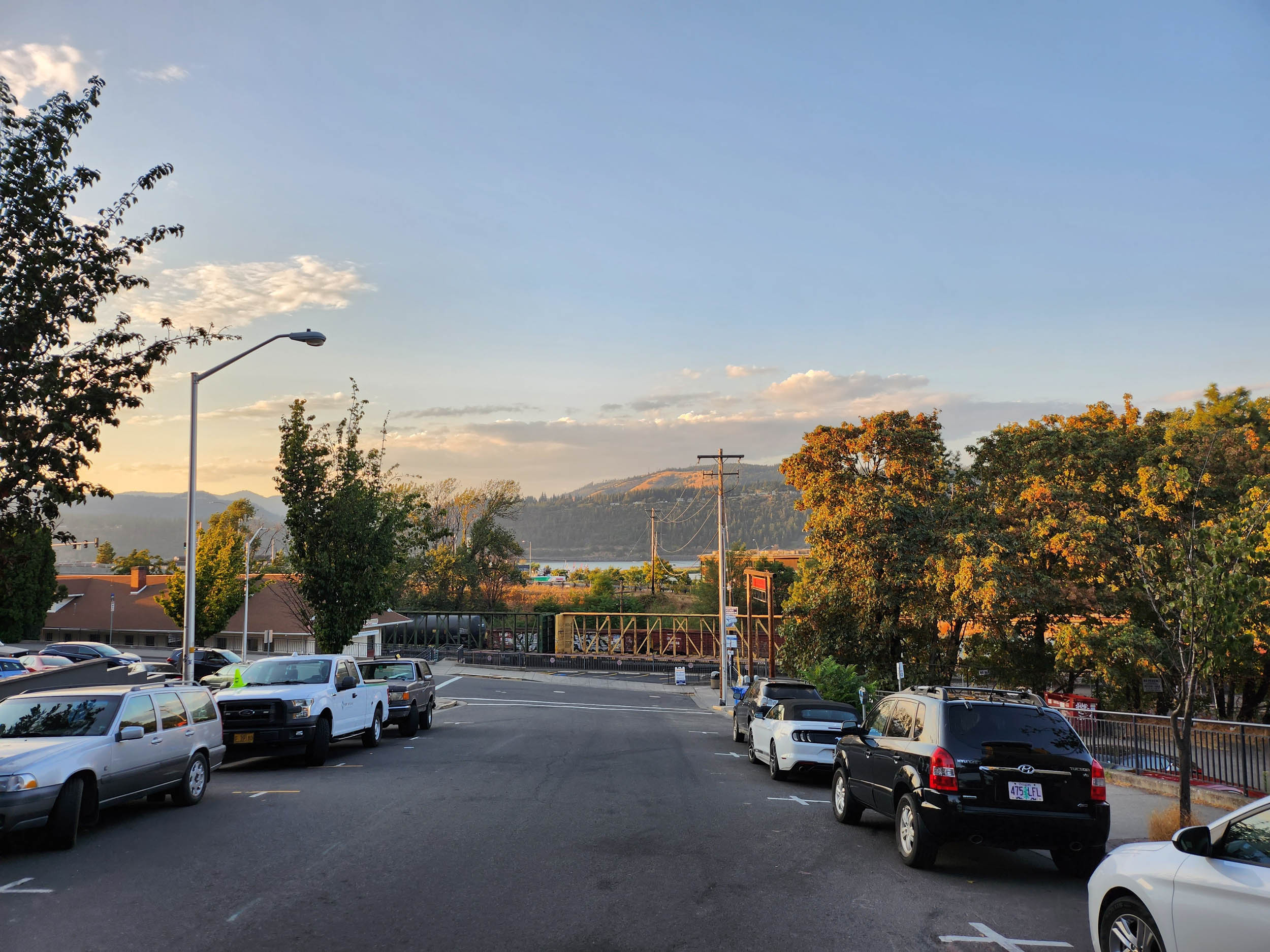





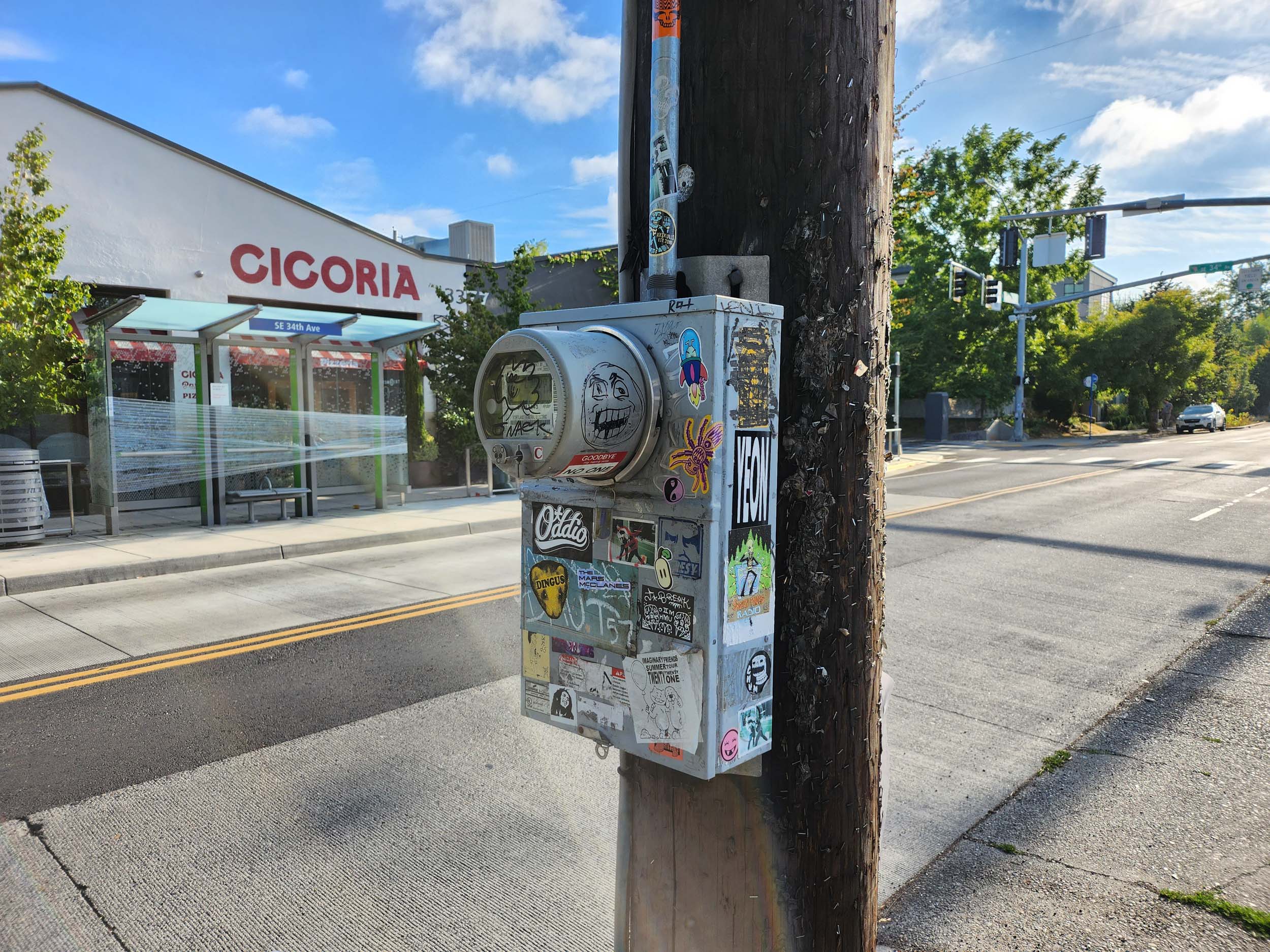
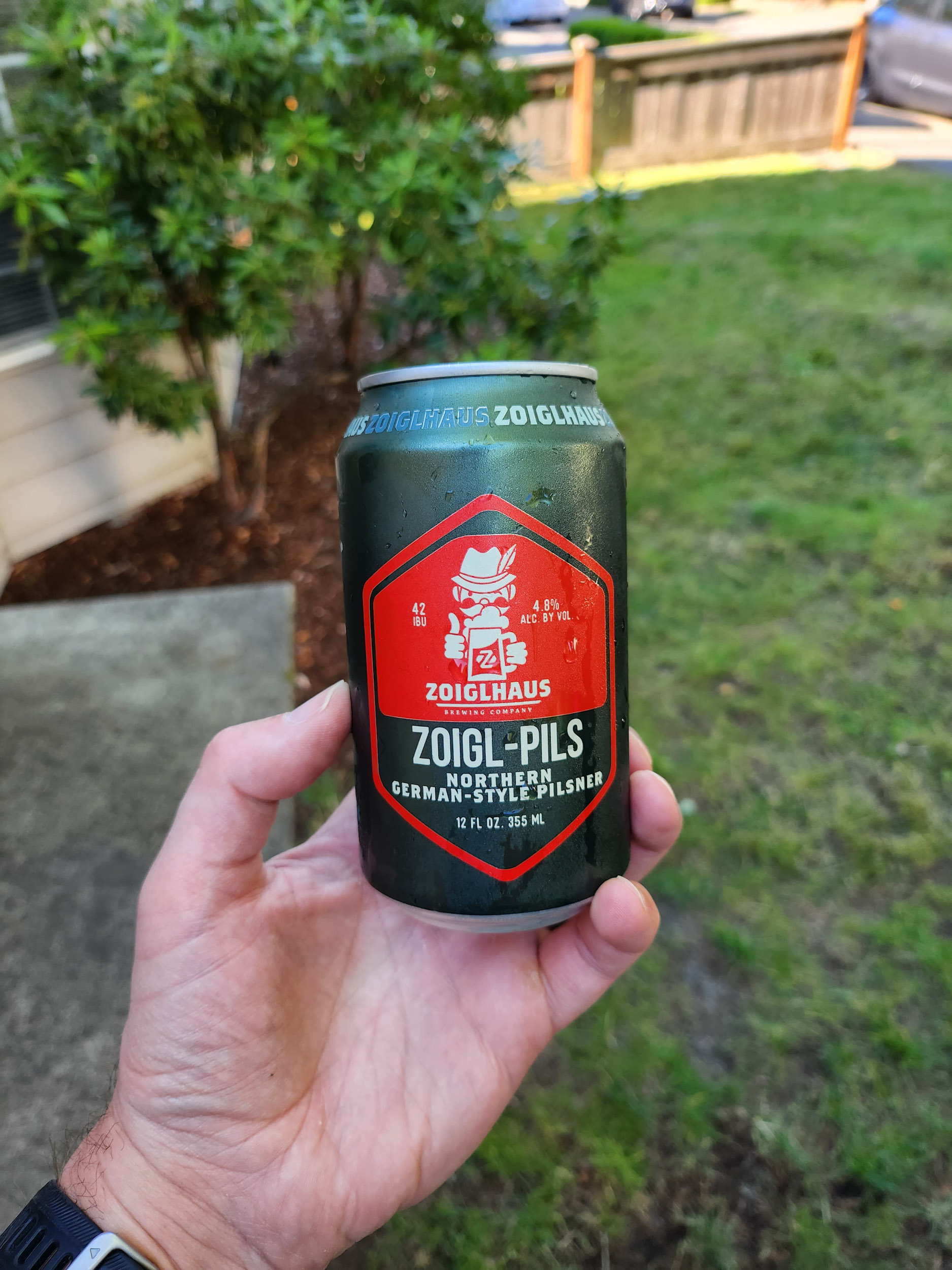
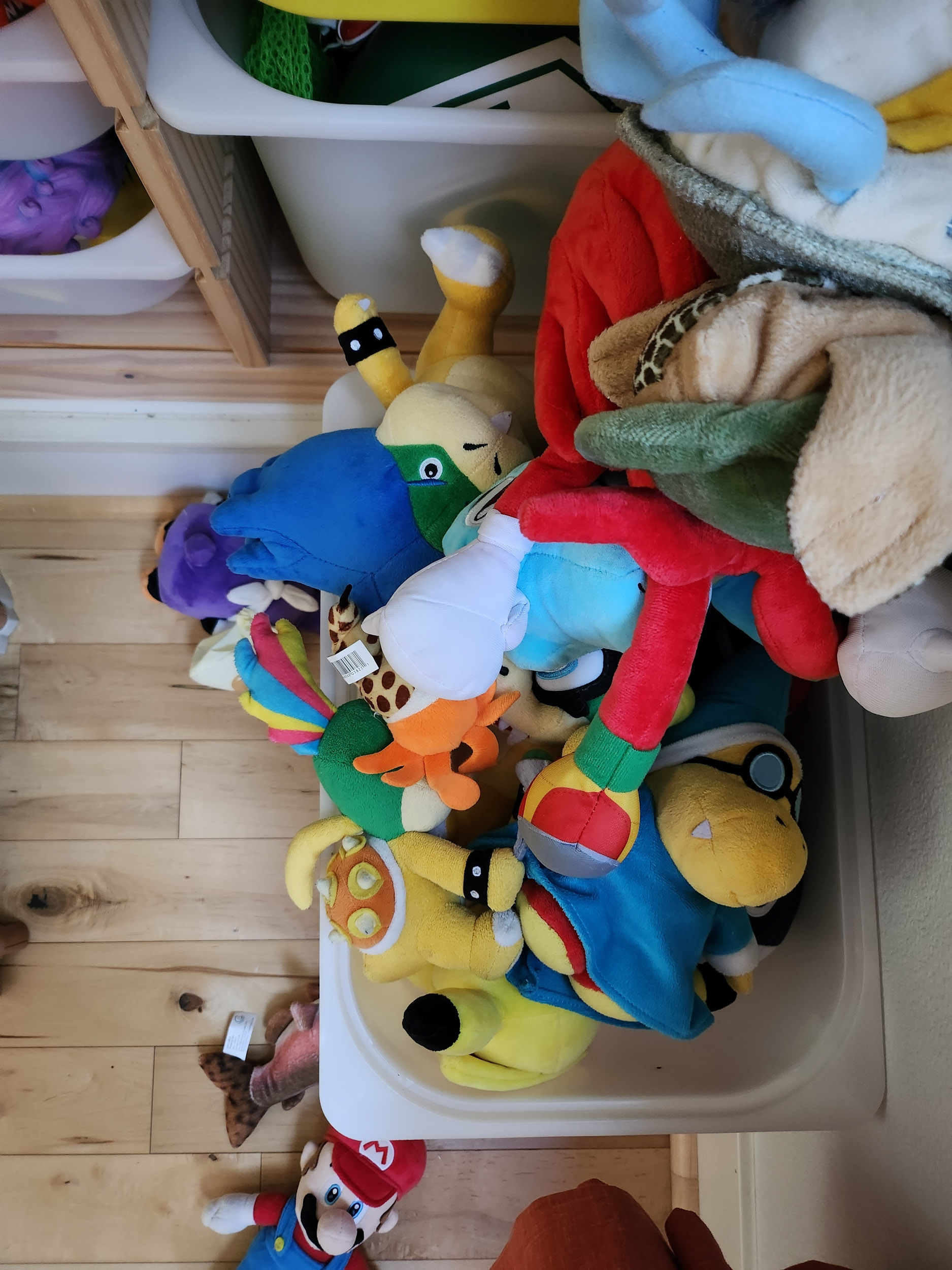

Unfolding it all the time. As much as I’ve enjoyed the size and design of the Galaxy Z Flip 4, I have got to admit that unfolding a phone all day can be tiresome. It has that little cover display that will help you out at times, but it’s limited in function and you almost always have to fully open the phone to do anything. After days and weeks of unfolding and folding over and over again, I’ve got to admit that I’m kind of looking forward to taking a break from the Flip 4 and going back to a regular phone. It’ll be a good test to see if I could truly live with the Flip 4 or if my life is better served with a classic smartphone design.
As I’ve been writing this review, I tossed my SIM card into a Pixel 6 to get prepared for the Pixel 7 and can already tell you that I’m not so sure I don’t want the Flip 4 back already. Sure, flipping and unflipping can be tiresome, but the compact nature of the Flip is really, really appealing. I’ve been doing it a month and my hands and routines are all used to it. I guess time will truly tell how this story ends.
Video
Unboxing and first look
First 10 things to do
Should you buy a Galaxy Z Flip 4?
It took me several years to come around to the idea of a flip phone and I think the Flip 4 finally convinced me that this could be a really nice future. The compact size of the Flip might be the option for those of us who don’t like all of the oversized phones that companies keep making. The phone is quite tall, but its thinner profile makes for a device that is easy to handle and that can’t be said for so many phones these days.
Outside of size, the software here is good, the battery life is better than expected, durability also is, performance is top notch, and the camera can probably pass the test for most people. The only thing I worry about is whether or not people will like to constantly fold and unfold this phone for the next couple of years. Knowing the popularity of the Fold and Flip series, I’m guessing most will be just fine.
This is an expensive phone at $1,000, but you all know how to get it at a steep discount using Samsung’s trade-in program. I think you’ll enjoy the Galaxy Z Flip 4.
Read the original post: Galaxy Z Flip 4 Review: The Foldable to Buy
via Droid Life: A Droid Community Blog https://ift.tt/sxYDSlQ
September 9, 2022 at 12:22PM




































